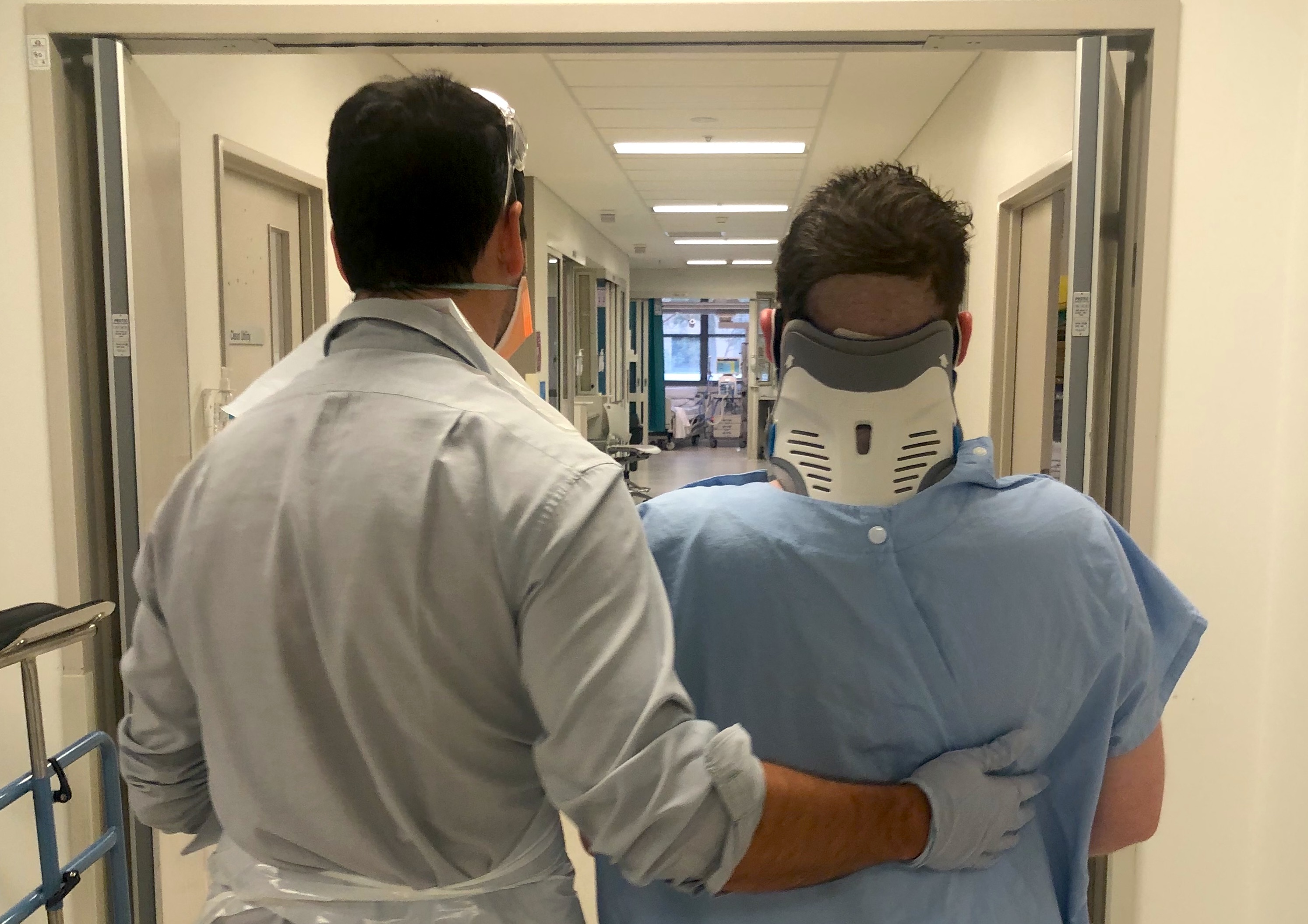
Health & Medicine
Cell research on rare disease finds new link to inflammation

This month is Ehlers Danlos Awareness Month – a group of rare hereditary syndromes that, if diagnosed early, can be managed to slow their progression
Published 24 May 2022
A lot of people may not have heard of the Ehlers Danlos syndromes– a group of rare genetic disorders affecting connective tissue, primarily the skin, joints, blood vessels, and some organs – but I have personal experience of one of the syndromes.
Just recently, my 24-year-old daughter was diagnosed with one of the syndromes. There are thirteen different Ehlers Danlos syndromes – the most common is hypermobile Ehlers Danlos Syndrome (EDS).

People with this form can suffer from extra stretchiness and/or fragility in the joints, skin and body tissues. It sounds like the condition should be obvious but diagnosis is often delayed for many years after symptoms appear.
Since my daughter was eight, she has struggled with fatigue, pain, brain fog, skin infections, joint and digestive problems as well as a multitude of other symptoms. Unfortunately, diagnosis is often delayed for people with hypermobile EDS. Symptoms can accumulate, and other conditions may be more likely to develop as time passes.
Although there is no cure, there are treatments which help with the wide range of symptoms and may delay progression.

Health & Medicine
Cell research on rare disease finds new link to inflammation
This means early diagnosis is critical.
The severity of hypermobile EDS can vary across people; some are severely affected and others much less so. As it’s a genetic condition, if a very sick family member is diagnosed then this diagnosis may explain minor, but still potentially significant, health issues in other relatives.
So, what’s going wrong when you have hypermobile EDS? Well, a genetic mutation results in faulty collagen.
Now, you might think this just gives you bad skin – and yes, collagen is the scaffolding within the skin – but collagen is also in the ears, eyes, nose, throat, digestive tract, ligaments, tendons, muscles, heart and other organs, blood vessels, and the dura (which is the lining around the spinal cord and brain). In short, it is crucial to functions throughout the body.
If you are unlucky, like my daughter, many different places in your body are affected.

This means joint problems, digestive problems, skin infections and even holes in your dura so the fluid around your spine and brain leaks out.
This is another reason why early diagnosis is critical.
Some people can go for years with symptoms of fatigue, headache and pain because the cerebrospinal fluid is leaking out from around their brain and spinal cord. But no one suspects a cerebrospinal fluid leak because leaks like this are so rare.

Health & Medicine
Bringing answers to children with a little-known genetic condition
That is, unless you have hypermobile EDS and weaker dura. So, if you have a diagnosis of hypermobile EDS then a doctor is more likely to recognise that you have a cerebrospinal fluid leak, and vice versa.
But, as both are rare conditions in the general population, it’s common for neither to be identified without the red flag of the other. It’s a circular logic that can leave some people suffering for years without diagnosis or treatment.
But not everyone who has hypermobile joints has joint problems or other symptoms that affect their quality of life.
Some people may just be extra flexible in some of their joints or other body parts – ending up as good gymnasts, dancers, swimmers or singers because certain parts of their body are stretchier.

In fact, some people have theorised that Elvis Presley’s famous gyrating dance moves may have only been possible as a result of him having unconfirmed hypermobile EDS, and that the condition may have contributed to his early death due to heart problems.
Hypermobile EDS is considered a rare condition.
Some estimates are that one person in every 3500 to 5000 is thought to have one of the EDS syndromes, with 80 to 90 per cent of these having hypermobile EDS. It is, in fact, likely the most common inherited connective tissue disorder in humans. However, many experts consider that the condition is under-diagnosed.

Health & Medicine
The genomic clues to disease
People who don’t meet the criteria for hypermobile EDS, may be classified as having the more general hypermobility spectrum disorders. It’s estimated that one person in every 600 to 900 people have one of the two conditions.
Hypermobile EDS may be under-diagnosed partly because of the Beighton Score – a tool used to assess joint hypermobility. Unfortunately, the score’s focus on upper limb mobility can leave many people undiagnosed with hypermobility because their symptoms arise from other joints, or maybe even other parts of the body.
My daughter, for example, was assessed by two rheumatologists who told us she was not hypermobile, which led to more than a decade without treatment or preventative management.

And according to her physiotherapist, Stephanie Conolan, getting that accurate diagnosis is crucial.
“Having a diagnosis connects the client with a specalised multidisciplinary team. These include rheumatologists, cardiologists, immunologists, geneticists, general physicians, physiotherapists and occupational therapists – all working to manage this complex condition.”
Now that my daughter has been diagnosed, she was treated earlier this year for an overly flexible and unstable neck with an occipitocervical fusion. Her skull was fused to her first vertebrae, and her first vertebrae was then fused to her second.

Health & Medicine
Inheriting an infectious legacy?
This reduced the compression of her brainstem which was being caused by severe neck instability . Her surgery was long and difficult, and recovery is an ongoing rocky road – partly because of the other health conditions which often come with hypermobile EDS.
Nevertheless, the outcome so far has been radically positive change in how she breathes, sleeps, swallows and walks. Her ability to orientate herself in space and her muscle control has improved, so she doesn’t bite her own tongue, drop things she is holding or bump into things.
Obviously, none of this treatment would have been provided without the initial recognition of her hypermobile EDS. Once she recovers fully from the occipitocervical fusion, doctors will then tackle the cerebrospinal fluid leak. The leak is there but is proving hard to find.
This month marks Ehlers Danlos Awareness Month. It’s a chance to raise awareness, education and outreach – and, hopefully, lead to wider recognition of the syndromes and an increase in early diagnosis so we can help people get the proper care they need to manage their condition.
Banner: Getty Images